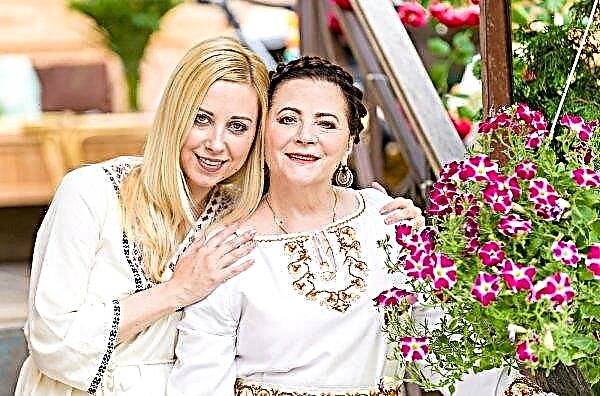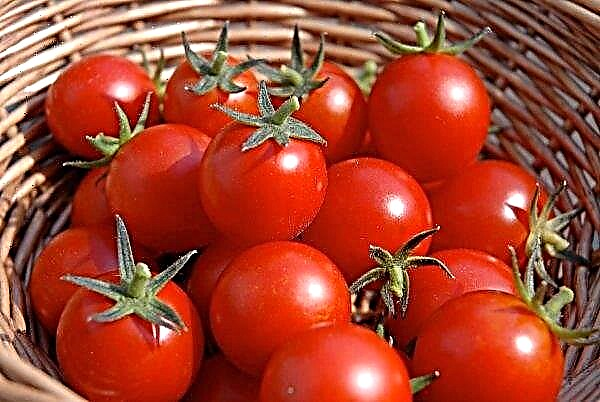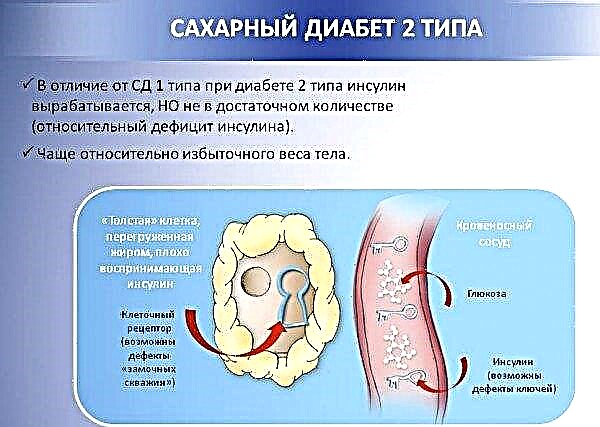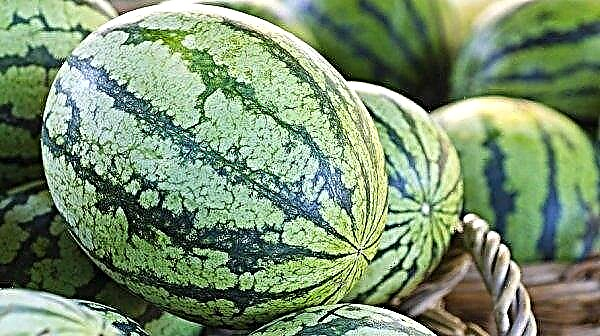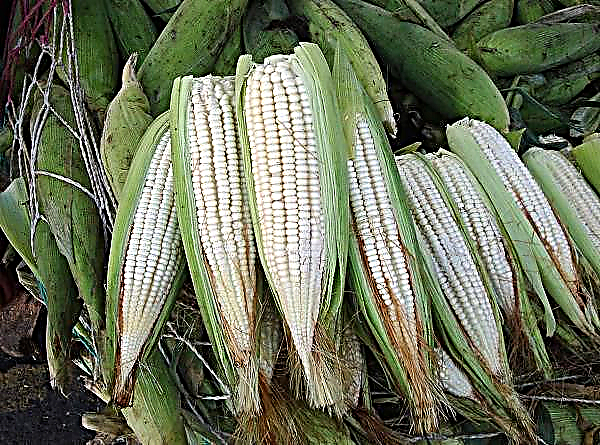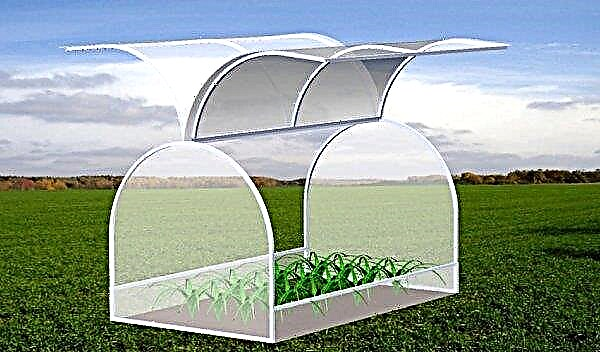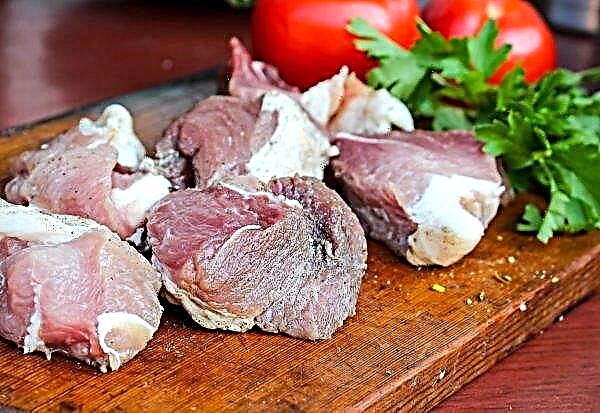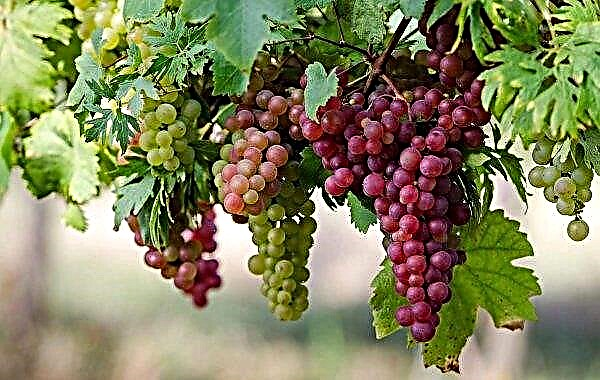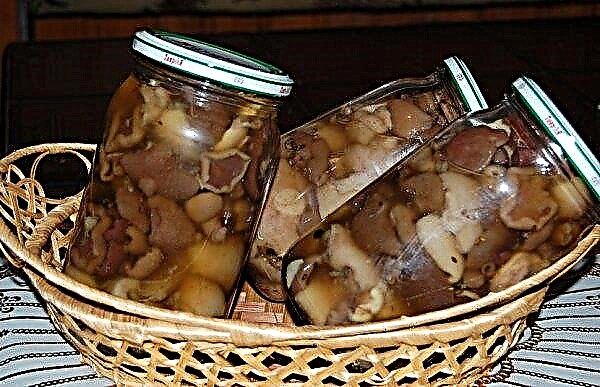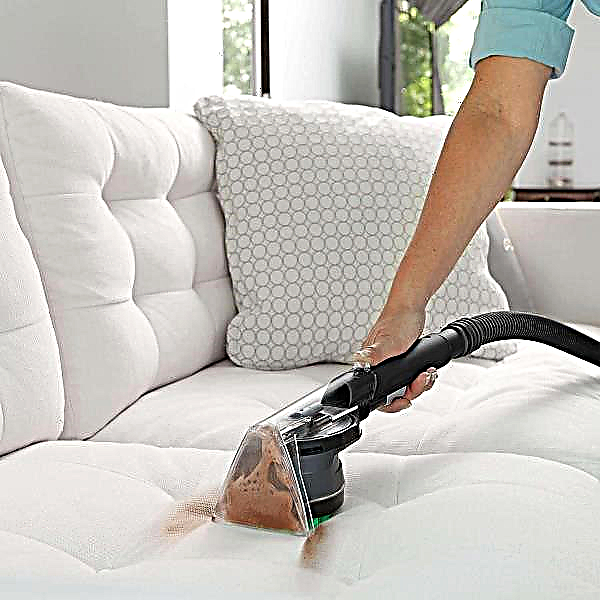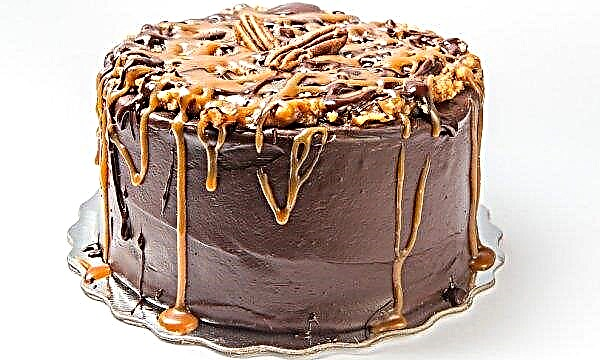Excellent keeping quality and excellent sweet taste of fruits are not the only advantages of Honey pears. With proper tree care, representatives of this species will delight you with a rich harvest very soon after planting.
History of breeding and botanical description of pear Honey
A varietal variety of pears called Honey was bred due to the unhindered pollination of the French species of pear Bere Bosk in 1964 at the Crimean OSS (experimental gardening station), due to the place of selection, the pear variety is sometimes also called Crimean honey. The creators of the species are breeders A.F. Mileshko, V.A. Yakimov and R.D. Babin. For state testing and yield assessment, the Honey variety was adopted in 1992 in the North Caucasus. A columnar or dwarf version of this variety began to be grown about 20 years ago.
According to its botanical characteristics, the Medovaya pear variety belongs to the late autumn varieties, the northern region of the Caucasus, Moscow Region, as well as the close ranges of the middle strip (central European part) of the Russian Federation, are considered the optimal region for cultivation.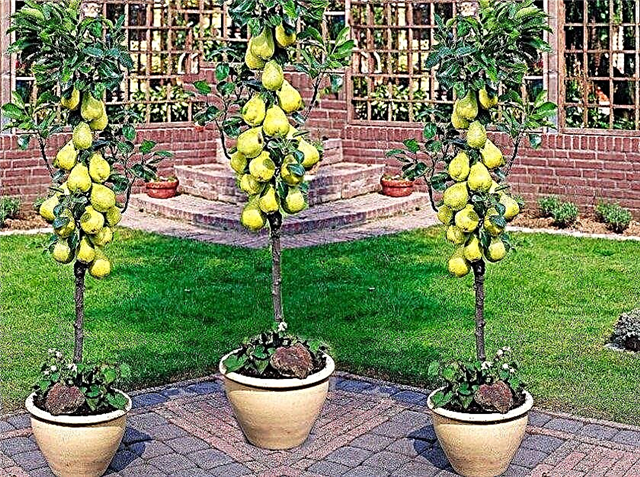 Sweet and aromatic honey pear fruit
Sweet and aromatic honey pear fruit
Wood appearance
The height of the tree is small - no more than 2 m. The freely and independently growing crown of the usual Medova is characterized by a pyramidal shape of medium leaf density, while the colon-shaped one has practically no horizontal branches, and vertical ones are closely pressed against the main trunk. The process of fruit development occurs after the 3rd year of cultivationHowever, for some reason, this period may be delayed up to 5 years.
Fruit Description

At the end of the ripening process (usually this is the middle - the end of September) the fruits are large and reach a mass of 300–420 g on average 15–20 kg per tree. The shape of the fruit is short-pear-shaped, characterized by uneven sides and a slight tuberosity of the surface. Pear peel is smooth, dry and thin. By color, the Honey Pear is characterized by a yellowish-green color with a slight brown blush. The subcutaneous points of the fruit are mild, small, gray in color.
The pulp of the fruit is characterized by abundant juice content, a certain percentage of oiliness, a special cream color and a strong honey aroma. By taste, Honey takes pride of place among the sweetest and most tender varieties, getting its well-deserved 4.7 points on a 5-point scale.
It is worth noting that the percentage of sugar in an apple is much higher than in a pear, however, the representatives of the Honey variety taste even better than the sweetest apples.
Advantages and disadvantages of the variety
- As for the positive characteristics of the variety, they are the following:
- fruiting soon after planting;
- constant crop stability regardless of climatic characteristics;
- saving space in the garden due to the special sizes of the honey-shaped columnar crown;
- external beauty and excellent taste of bulk fruits;
- excellent fruit retention on branches even after ripening;
- good adaptability to soil base and other growing conditions;
- a high level of transportability of fruits that are dense in structure;
- decreased sensitivity to most diseases;
- excellent winter hardiness for temperate climates.
- Cons varietal varieties of pear Honey:
- mismatch of fruit sizes to standard in the conditions of formation of an extra number of ovaries;
- increased productivity has a bad effect on the power of the tree, therefore, on the level of frost resistance of shoots;
- as practice shows, this variety bears fruit well only in warm and temperate climates.
Pear Pollinators
Honey variety is self-fertile, therefore, the question justifiably arises whether it can be pollinated independently. Experts say that only partly, for this reason, for the annual harvest at least two pollinators should be present on the garden plotthat bloom at the same time as Honey, and are also close to the last variety in terms of ripening. You can choose Tauride, Miracle, Bere Ardanpon or the progenitor Medova - Bere Bosk to implement this goal and plant them at a distance of 3 m from Medova.
Did you know? In the cuisines of other countries, pear is used not only by the traditional method. For example, in Switzerland, a highly concentrated honey syrup is made from fruits, which is called pear honey, and in Italy there is even pear-based mustard that gives dishes a refined and unique taste.
Rules and landing technology
To implement the planting of seedlings of this variety, a garden plot of any size characteristics is suitable, the main thing is that the distance between the planted sprouts should be at least 1 m, although due to the inability to reach such an interval, it is possible to reduce the distance by half.

Autumn is considered the most suitable time for planting this fruit tree., namely, the period after the leaves are dropped by trees and before the first frosts appear, as a rule, this is mid-October. It is also allowed to plant Honey in the spring (mid-April - early May), if it was not possible to carry out this procedure in the autumn, but it must be ensured that the buds do not bloom before planting the seedlings.
In this case, by the way, it is recommended to prepare the hole since autumn. As for the planting of the columnar variety, it is preferable for it to be placed in the spring in the ground due to the frequent rooting out of the root system until frost.
The optimum age of pear sprouts for planting is no more than 3 years (if the tree is older, then the probability of damage to its root system during extraction and transportation is high). Young seedlings take root better and adapt to new growing conditions. It will not be difficult to determine the age limits of the seedling if you know certain points.
| Age | Tree characteristics |
| 1 year |
|
| 2 years |
|
When transporting a seedling to avoid injury after purchase, it is necessary to ensure that its roots are wrapped with a wet cloth.
Important! When choosing a pear seedling, pay attention to the appearance of the root system (as a rule, these are three main roots of considerable thickness, densely covered with thin roots): the presence of any swelling, growths, wrinkles or dryness is a sign of a potential or already developing latent disease.
It is necessary to take into account the fact that the pear tree reacts very poorly to transplants, for this reason the approach to choosing a permanent seat should be thorough. The advantage in this situation is given to the southern, western and south-western areas. The site should be well-lit, but not in direct sunlight to avoid thermal damage to the tree. In addition, it is necessary to protect the seedling from the cold wind from the north side with a high fence or any building.
Video: Planting a pear
In no case when planting a pear, an area with a close occurrence of groundwater is not suitable due to frequent waterlogging of the soil and rotting of the roots, and then, as a consequence, the occurrence of dry crown, weakening and death of the plant. The soil base must be not only fertile (with a low level of acidity), but also loose in its structure, air and moisture permeable.
Dimensional parameters of the pear planting pit:
- in case of poor development of the seedling - diameter 60 cm, depth 80 cm;
- for well-developed trees - diameter 80 cm, depth 100 cm.
When cultivating the planting hole, the outer soil layer must be postponed for a while, and then the recess should be filled with organic elements in the following sequence:
- 2-3 buckets of peat and humus,
- 1-2 buckets of coarse sand mixture,
- 3 large spoons of potassium sulfate,
- 1 cup superphosphate.
All fertilizers must be thoroughly mixed and poured with water (2 buckets) in order to condense the soil and promote better absorption of organic fertilizers.
Video: Planting seedlings of columnar fruit trees
After one week thereafter, the center of the pit need to drive a peg so that above the surface of the earth its length was no more than half a meter, and the seedling was placed from the northern edge of it. This location will protect the stamb from spring and summer overheating, as well as potential sunburn and, in addition, will become a reliable support for the young sprout.
The time has come to return to the hole the previously deposited fertile layer of soil: Lay it out in the form of a knoll or cone. Before planting, the foliage of the seedling should be cut to avoid loss of moisture by the plant. In addition, you need to check the root system for damage: if any, the affected roots must be carefully removed.
Important! Before planting a pear seedling in order to better adapt it to the soil, you can moisten the root system with a mixture of indolylacetic acid and a special earthenware.
The prepared seedling is set on the mound so that it is possible to spread the roots on the sides, and then sprinkle the voids with the rest of the soil. The soil must be carefully and densely compacted, but not by trampling with your feet, but by periodically watering and adding earth. The soil should cover the root system so that the trunk transition to the root is visible 5–6 cm above the soil level.
Garter sapling to the peg must be carried out using a cloth or film, but not a wire, which can significantly damage a young plant. When the seedling is already completely sprinkled, a small earthen roller should be built around the trunk so that there is where to water the plant. In the created neoplasm, you need to pour 2 buckets of water.
 Pear seedlings must have a developed root system
Pear seedlings must have a developed root system
Care Features
After the planting of the tree, it is necessary to provide proper care, including watering, pruning, top dressing and preparation for winter, the features of which we will consider below.
Watering
The frequency of watering a planted pear depends on the time of planting: if this happened in the fall, then abundant watering will be sufficient. The fact is that natural precipitation during this period provides sufficient moisture to the tree, but in conditions of drought until the time of fruiting, soil moisture should be done 1 time in 7 days. In the case of spring planting, watering the plants will need to be carried out 1 time every 3 days, and in hot climatic conditions - almost every day. The fruiting tree is watered twice during the season before and after flowering.
The norm for each irrigation by sprinkling is 2 buckets for each year of plant age. After moistening, the soil around the plant must be carefully, but thoroughly loosened and covered with mulch (mowed and pre-dried grass or peat). Thanks to the implementation of this process, moisture after irrigation lasts longer.
Rules for trimming and forming crowns
Given the fact that this type of pear has a poorly developed shoot-forming function, at first the plant will look slightly exposed. However, if such a need arises, crown formation is carried out no earlier than the second year after disembarkation. This is done in the spring before the start of the juice formation process using a sharp secateurs.
To form the first tier of the crown, leave the main conductor and 2 or 3 well-formed branches, the remaining shoots are cut off at the base of the branch in the place of a ring-shaped formation. The remaining shoots are shortened by 1/3 of the length each, and the height of the central shoot is adjusted so that it is 15–20 cm higher than the topmost branch on the side.

Upon reaching the pear of the third year of life on the site, the formation of the second tier of the crown: two well-strengthened branches at a level of 50–70 cm above the first tier are aligned in height. The remaining shoots on the tier are cut off at the annular base, and the inter-tier shoots are greatly shortened. The main conductor is cut off by 10–20 cm.
In the fourth year of development (the formation of the third tier of the plant), one more lateral branch is left at a level of 40 cm above the second tier, with the other tier and inter-tier branches, the same actions are performed as in the formation of previous tiers. After 2 years after the formation of the last third tier of the crown, the central rod is subject to alignment with the last branch.
Did you know? Pear tree is used in the manufacture of musical instruments, as well as in furniture production. Due to the excellent blocking of color and smell, the strength of the material, resistance to moisture, this wonderful material is also used for the manufacture of kitchen utensils.
If the columnar Honey planted in the spring threw flowers in the first year, then it is better to cutto properly direct the activity of the plant. In subsequent years, the plant can leave a few flowers and no more than 3 ovaries.
One of the essential points in the proper development of a pear tree is pinching the upper parts of young shoots to a stronger tissue, which prevents elongation of branches. The period for performing the tweezers is from the beginning of summer every 10 days. In the fall, until mid-September, dried and diseased processes, as well as branches growing at an angle of 90 degrees, are removed. Trimming sites must be treated with a special mixture of unsalted fat, rosin and wax (100 g: 100 g: 200 g, respectively), heated to 40 ° C.
 After trimming, damaged areas must be treated with garden var
After trimming, damaged areas must be treated with garden var
Fertilizers and application rates
The first year, following the order of fertilizing during planting, the columnar honey feeding does not require. In the second year, the plant needs autumn support with the help of organics and minerals, and in the spring, in the process of sap flow, it needs to be fed with organic matter. To achieve this goal, 1 kg of manure with a content of nitrogen, potassium and phosphorus in a percentage of 0.5: 0.4: 0.25, respectively, is distributed over an area of 1 square meter and is actively mixed with soil.
Mineral components (potassium and phosphorus - 3: 2 g / m² for young plants; 6: 4 g / m² after the trees reach 4 years of age) are added to the recesses in the near-stem well. As the best nutrition for young plants, experts recommend using an unconcentrated mixture of chicken manure or cow manure, which is best applied to wet soil.
Spraying the foliage of a tree with a superphosphate solution with a concentration of 3% before flowering activates the growth of the plant and increases the yield. Urea (treatment with a solution of 2% concentration) strengthens the pear, and ash (750–1000 g per 1 m²), introduced during the autumn digging of the soil, reduces the acidity of the soil.
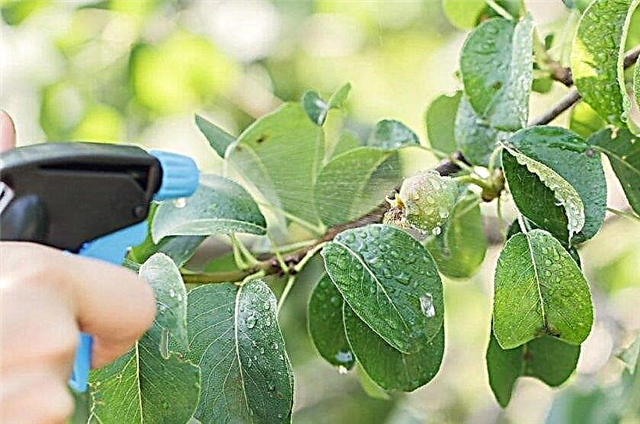
Winter preparations
Honey has a winter hardiness level above the average, since the shoots are able to survive the subzero temperature up to 25 degrees. Before the arrival of winter, a young plant should be abundantly watered with 3 buckets of water (as for adult trees, in this case the norm of pre-winter watering of each is at least 5-6 buckets of water). It is advisable to whiten the trunk and some of the lower branches to avoid thermal burns.
Important! The phosphorus-potassium top dressing introduced during pear planting positively affects the winter hardiness of the variety.
In addition, rodents often attack young plants during wintering; therefore, to protect the pear, the trunk is tied with old tights or a shock of fir / pine branches. From freezing the roots, shelter with sawdust or straw will help.
In the case of adult trees, these steps are optional; however, in both situations, the territory of the root hole must be cleaned of fallen leaves, rotten and overripe fruits.
 Having prepared the tree for wintering, you will ensure good yield in the next season.
Having prepared the tree for wintering, you will ensure good yield in the next season.
Variety diseases and pests, control and prevention
Despite the fact that the variety is well resistant to fungal diseases, it is still better not to bring it to the potential danger of infection by both these and other diseases and damage by pests. The table below describes the measures necessary to prevent the occurrence of the above troubles, as well as to combat them.
| Disease / pest, signs of damage | Prevention methods, elimination actions |
Scab:
| Preventive measures: systematic and timely removal of infected plant parts and fruits. Methods of struggle: treatment with Bordeaux liquid (3% concentrate) until the buds open; if the lesion has affected the buds - spraying with an aqueous solution of Horus (10 l / 2 g). |
Rust:
| Preventive measures: obligatory burning of fallen leaves and digging of the trunk, as well as the introduction of antifungal prophylactic drugs. Methods of struggle: processing until foliage, before / after flowering - a solution of "Scor" in water (2 ml / 10 l). |
Fruit rot (moniliosis):
| Preventive measures: removal and destruction of affected and fallen independently fruit. Methods of struggle: during sleep of the kidneys - “bottom” (100 g / bucket of water). |
Common tinker or leaf flask:
| Preventive measures: cleaning the trunks of the aged bark and growths of moss; cutting and burning along with the bark, moss and fallen leaves of the affected branches. Methods of struggle: Aktara treatment (1.4 g / bucket of water) is used in dry weather conditions without wind. |
Aphid:
| Preventive measures: removal of dead bark from the stem; whitewashing the lower part of the trunk and lower branches with lime; elimination of root weeds. Methods of struggle: spraying with a mineral oil emulsion of CAS dissolved in water (0.6 l / 10 l) in early spring before buds open. |
Pear moth:
| Preventive measures: digging the soil around the trunk; wrapping burlap of the trunk at a level of 50 cm above the ground. Methods of struggle: treatment with Agravertin solution (5 ml / 1.5 l of water) before and after flowering. |
Can a pear Honey be pollinated by a pear Marble
A variety of pear is no less interesting and justifying its demand is the Marble variety. Many gardeners are interested in the effect of this species on the yield of Honey in the issue of pollination.
So, the above varieties of pears can be grown simultaneously in one garden plot, however, pollen is not suitable for transferring pollen to each other, since the flowering and ripening periods of plants do not coincide.
Did you know? The legendary poet Homer, in his epic poem Odyssey, called the pear the gift of the gods. According to mythological data, the fruit was sacrificed to more than one deity. For example, in Greece it was Aphrodite (goddess of beauty and love) and Hera (patroness of marriage and motherhood), and in Rome — Juno (goddess of the family and female productive power) and Venus (patroness of beauty and carnal love).
Harvesting and storage
Despite the fact that the variety is late autumn, can ripen fruits at the end of August, and since they do not fall, you have to collect them yourself, carefully tearing it from the tree and preserving the stem.
It is not recommended to pick fruits that have not reached technical ripeness in their development: after separation from the tree, the fruit does not have the ripening property during storage and does not acquire aromatic and taste qualities characteristic of the representative of this variety. Pear ripeness can be determined both visually and by tasting it.: the tail of a ripe fruit is easily separated from the fruit, the flesh has a pleasant beige color, delicate, but dense in taste and sensation.
Best of all keep collected fruits in the refrigerator when the thermometer is at + 1 ° C or in a dry basement / cellar with temperature not higher than + 4 ° C: in such conditions, as practice shows, with integrity, pears of Medovoy variety can lie for 60–90 days.
When storing fruits, they should not be washed and wiped so as not to remove a specific wax coating that protects the fruit from premature spoilage. Fruits must be wrapped in paper and put in only one layer on shelves or boxes. Representatives of this variety are well suited for use both in fresh and in canned form (jam, compotes, pastries, etc.).
Important! Honey pears are not suitable for storage in frozen form.
The fruits of the Honey variety, due to their unique sweetness and tenderness of fruits, attract the attention of gardeners. In order for the tree to please the owners with its plentiful harvest for more than one month after the pears ripen, you just need to adhere to the basic rules for growing this type of plant, described in this article.

